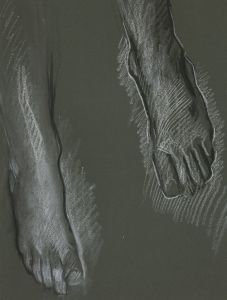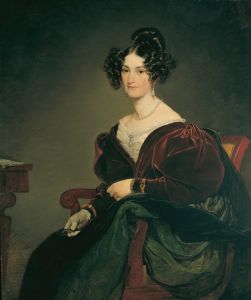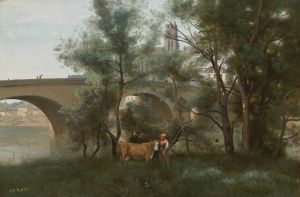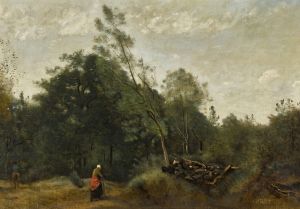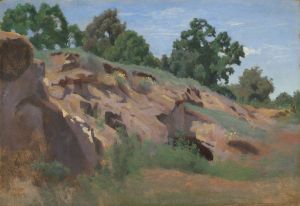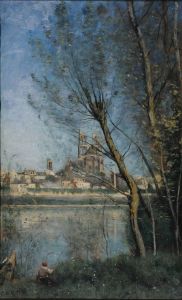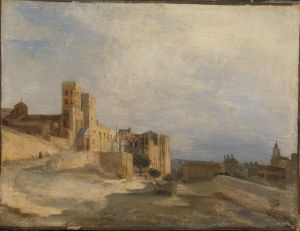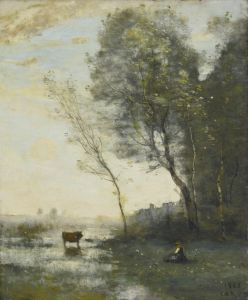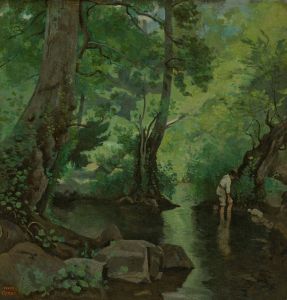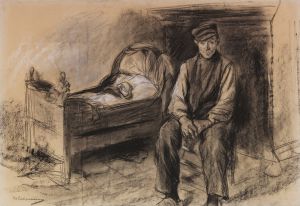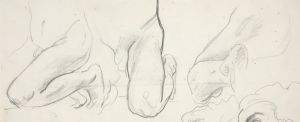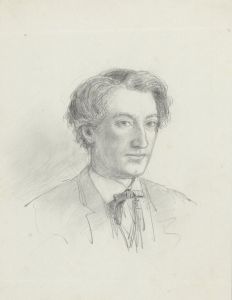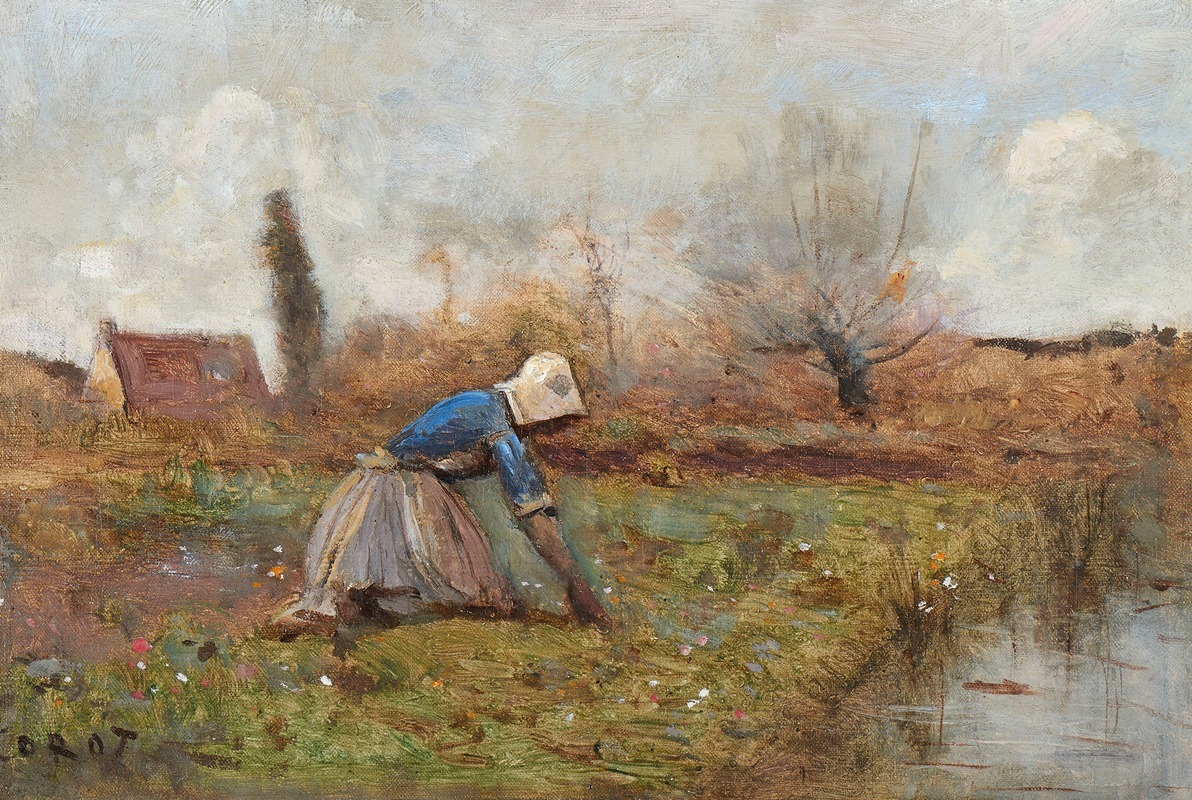
Fermière agenouillée cueillant des pissenlits
A hand-painted replica of Jean-Baptiste-Camille Corot’s masterpiece Fermière agenouillée cueillant des pissenlits, meticulously crafted by professional artists to capture the true essence of the original. Each piece is created with museum-quality canvas and rare mineral pigments, carefully painted by experienced artists with delicate brushstrokes and rich, layered colors to perfectly recreate the texture of the original artwork. Unlike machine-printed reproductions, this hand-painted version brings the painting to life, infused with the artist’s emotions and skill in every stroke. Whether for personal collection or home decoration, it instantly elevates the artistic atmosphere of any space.
Jean-Baptiste-Camille Corot, a prominent French landscape and portrait painter, is often associated with the Barbizon School, which played a crucial role in the development of landscape painting in the 19th century. One of his lesser-known works, "Fermière agenouillée cueillant des pissenlits" (translated as "Kneeling Farm Woman Picking Dandelions"), exemplifies his ability to capture the simplicity and beauty of rural life.
Corot was born in Paris in 1796 and began his artistic career relatively late, after working in his family's textile business. He studied under Achille-Etna Michallon and Jean-Victor Bertin, both of whom influenced his early work. Corot's style evolved over time, and he became known for his plein air painting, a technique that involves painting outdoors to capture natural light and atmosphere. This approach was instrumental in the transition from Neoclassicism to Impressionism.
"Fermière agenouillée cueillant des pissenlits" is a testament to Corot's skill in depicting serene and intimate scenes of rural life. The painting portrays a farm woman kneeling as she picks dandelions, a common and humble activity that Corot elevates through his delicate brushwork and attention to detail. The composition is simple yet effective, focusing on the figure of the woman and the surrounding landscape.
Corot's use of light and shadow in this painting is particularly noteworthy. He employs a soft, diffused light that bathes the scene in a gentle glow, creating a tranquil and contemplative atmosphere. The muted color palette, dominated by earthy tones and soft greens, enhances the sense of harmony between the figure and her natural surroundings. This subtlety in color and light is characteristic of Corot's mature style, which often emphasizes mood and emotion over strict realism.
The painting also reflects Corot's interest in the human figure, which became more pronounced in his later works. While he is primarily celebrated for his landscapes, Corot's portraits and figure studies reveal his keen observation of human nature and his ability to convey the quiet dignity of everyday life. In "Fermière agenouillée cueillant des pissenlits," the woman's pose and expression suggest a moment of introspection, inviting viewers to contemplate the simplicity and beauty of her task.
Corot's influence on subsequent generations of artists cannot be overstated. His approach to landscape painting, characterized by a focus on light, atmosphere, and mood, paved the way for the Impressionists, who admired his ability to capture the ephemeral qualities of nature. Artists such as Claude Monet and Camille Pissarro acknowledged Corot's impact on their work, and his legacy continues to be celebrated in art history.
While "Fermière agenouillée cueillant des pissenlits" may not be as widely recognized as some of Corot's other works, it remains an important example of his artistic vision and technical prowess. The painting encapsulates the essence of Corot's contribution to art: a harmonious blend of nature and humanity, rendered with sensitivity and grace. Through this work, Corot invites viewers to appreciate the quiet beauty of everyday moments, a theme that resonates across his oeuvre and continues to inspire artists and art lovers alike.





